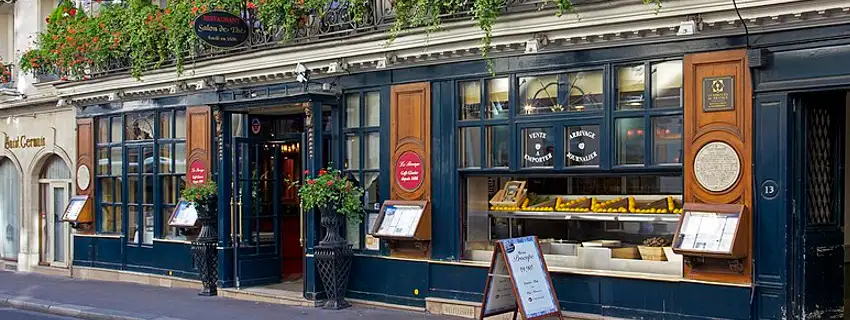Published:
Author: Antonio Maria Guerra
History of Italian Gelato
HISTORY, INFO, PLACES, INTERESTING FACTS

Gelato is one of those Italian specialties that can be tasted all around the world. Its origins are very ancient and it took centuries of evolution to reach the form currently marketed. Needless to say, such a long path causes difficulties in identifying its inventor. Let’s shed light on the subject by delving into the history of Italian gelato.

What is gelato?
Gelato (italian for ‘ice cream’) is a frozen dessert made using milk, cream, egg yolks and sugar as the main ingredients. Some others may be added to characterize its taste.
The creaminess of the mixture is closely related (among other things) to the size of the ice crystals it contains. The specialty can be enjoyed using a teaspoon or accompanying it to a crispy wafer that is often cone-shaped. Italy is undoubtedly an international point of reference for ice cream, thanks to its quality due to centuries of evolution.
After telling the history of Italian ice cream, in this article will explain in detail the method currently used to produce the specialty. You can access the contents by clicking this LINK


The history of Italian gelato.
Italian gelato, an excellence known and much appreciated worldwide, is the result of an evolution lasted many centuries. The first form of this specialty was quite similar to what, nowadays, we commonly call ‘granita’. Many peoples of the past, from the Japanese to the Indians, up to the inhabitants of Mesopotamia and of the ancient Egyptians, had the habit of flavoring the snow with honey, spices and bits of fruit. The same habit was inherited by the Greeks and Romans of classical times: the latter, in particular, began scraping blocks of ice, giving birth to one of the most traditional Capitoline delicacies, known nowadays as ‘grattachecca’.
During the Middle Ages the Arabs introduced to Sicily the ‘sharbat’: a syrupy drink, of Middle Eastern origin, sweetened with cane sugar. In time, sharbat would evolve in the ancestor of the ‘sorbet’ (from which, most likely, it derives its name): a semi-dense mixture, cooled using a special container immersed in ice and salt. This sweet mixture became all the rage in Renaissance courts: in this regard, it seems that Catherine de’ Medici, future queen consort of France, was particularly fond of it. According to some scholars, one of the cooks she had in service, a certain Ruggeri, was very skilled in preparing it.
Read more
According to others, the real expert would have been another ‘employee’ of the Medici family: an architect named Bernardo Buontalenti. He was an eclectic individual, very brilliant, whose skills, like Leonardo da Vinci before him, ranged in various fields. Well, it seems that he was the first to use of milk and cream as ingredients, beginning the transitional process that would transform sorbet into modern ice cream.
This process advanced also thanks to the work of Francesco Procopio Cutò (among the others), a resourceful Sicilian who emigrated to Paris and founded the Café Le Procope in 1686. Soon the café (still in business today) began to be frequented by the creme de la creme of French culture and politics, eager to savor the exquisite sorbets served (full-fledged forerunners of ice cream).
Between the 1700s and 1800s the sweet specialty gradually became creamier (*1). The Neapolitan artisans, in particular, excelled in its preparation, gaining great fame. As evidence of this, it’s interesting to recall the passion with which the celebrated Italian writer Giacomo Leopardi used to savor it during his stay in the ‘city of the sun’.
The publication of ‘Trattato di Gelateria’, the first essay about the cold dessert printed in Italy, dates back to 1911. Its author, Giuseppe Enrico Grifoni, was a Perugian who, most probably not by chance, had learned the craft right in Naples.
At the beginning of the 20th century there were three artisan schools that distinguished themselves in spreading the culture of Italian ice cream around the world: in addition to the historic ones, namely the Neapolitan and the Sicilian, it’s important to remember the Venetian one, with particular reference to the Cadore area (in the Province of Belluno). It’s therefore no coincidence that the inventor of the cone, the crispy rolled wafer, was a Cadore native, Italo Marchioni.
During the 1900s, the invention of very efficient production machineries and the simultaneous refinement of refrigeration systems, initiated the large-scale marketing of ice cream.
Notes:
*1: The creaminess of ice cream depends on the size of the ice crystals that it contains;

History of Italian gelato: the invention of the cone.
Although ice cream can be enjoyed in various ways, accompanying it to a cone is considered by many the classic one. It’s surprising to find out that this was not always the case: for very long years, the icy specialty was served in glass cups,
Read more
which, despite being more elegant, had annoying drawbacks such as impracticality and possible accidental breakages. It was exactly these flaws that pushed Italo Marchioni, an Italian (originally from Cadore) who emigrated to the United States, to invent the crispy rolled waffle and patent the machine for its production in 1903.

History of Italian gelato: the Neapolitan sorbet.
Sorbet was introduced in Sicily by the Arabs during the Middle Ages. It was soon appreciated throughout the Italian peninsula and especially in Naples, which became renowned for the incredible quality of its preparation.
Read more
As evidence of this, it will be enough to mention the treatise on gastronomy ‘Lo scalco alla moderna’ (1692), in which the author, the famous cook Antonio Latini, referring to the icy specialty, wrote: “… here in Naples it seems that everyone is born with the genius and the instinct to make sorbets.” (“… qui in Napoli pare ch’ ogn’uno nasca col genio e con l’istinto di fabricar Sorbette”). So, it should be no surprise that, over time, the city also became a point of reference for the production of ice cream, a full-fledged evolution of sorbet.

History of Italian gelato: Bernardo Buontalenti
Bernardo Buontalenti, whose real name was Bernardo Timante Buonacorsi, was a 16th-century intellectual at the service of the Medici family. Endowed with a multifaceted culture, he proved himself an expert in multiple disciplines: from architecture to engineering, painting and sculpture. A pupil of Vasari, he designed many Florentine palaces (renowned still today) as well as villas, gardens and fortifications.
Read more
His spectacular sets, designed to improve parties and banquets, are very famous. Soon he demonstrated his cooking skills, inventing a dessert and even the machinery for its preparation. This dessert was a variation of the sorbet, enriched with ingredients such as milk, cream and egg yolk. The specialty, very popular from the start, is considered the forerunner of modern ice cream. It’s therefore no coincidence that nowadays there is flavor named after him, the ‘Buontalenti’, made (precisely) with cream, milk, eggs and sugar.

Café Le Procope: the first ice cream shop.
In 1686, Francesco Procopio Cutò, an artisan of Sicilian origin who emigrated to Paris, founded the famous Café Le Procope. Before long, the café became a reference point for the most distinguished representatives of French culture and politics: from Robespierre to Marat, Voltaire and Honoré de Balzac. According to some, Napoleon Bonaparte himself was one of its customers.
Read more
People visited Le Procope not only for the pleasant ambiance, but also (and especially) to enjoy the exquisite sorbet prepared by Cutò: a specialty so prized that many experts believe it to be the forerunner of modern ice cream.
The Café, after more than three centuries since its opening, is still in business today: it’s located in Rue de l’Ancienne Comédie at number 13.

History of Italian gelato: the ‘grattachecca’.
The ‘grattachecca’ is one of the most typical specialties of the Roman tradition, whose origins date back to the time of the Empire, when it was customary to sweeten snow by seasoning it with honey and pieces of fresh fruit.
Read more
Its name, undoubtedly quite singular, was born in the late 19th and early 20th centuries and is composed of the words ‘gratta’, derived from the Italian verb ‘grattare’ (‘to scrape’), and ‘checca’ used in the local dialect to indicate a block of ice. The specialty is prepared by scraping the surface of the latter: the fine granita thus obtained is added with various syrups and fruit, as well as sugar. It can be tasted by buying it in in one of the so-called ‘grattacheccari’: small kiosks, scattered in the most popular areas of the city, where the delicacy is made strictly by hand.
Copyright information.
The images displayed in this page belong to WebFoodCulture, with the exception of:
Creative Commons Images
- Portrait of Antonio Latini, Wellcome Collection (Wikipedia Link)
- Portrait of Bernerdo Buontalenti, 1731, Pietro Antonio Pazzi. British Museum Collection (Wikipedia Link)
- Cafè Procope, 2010, photo by Jean-Marie Hullot (Wikipedia Link)





